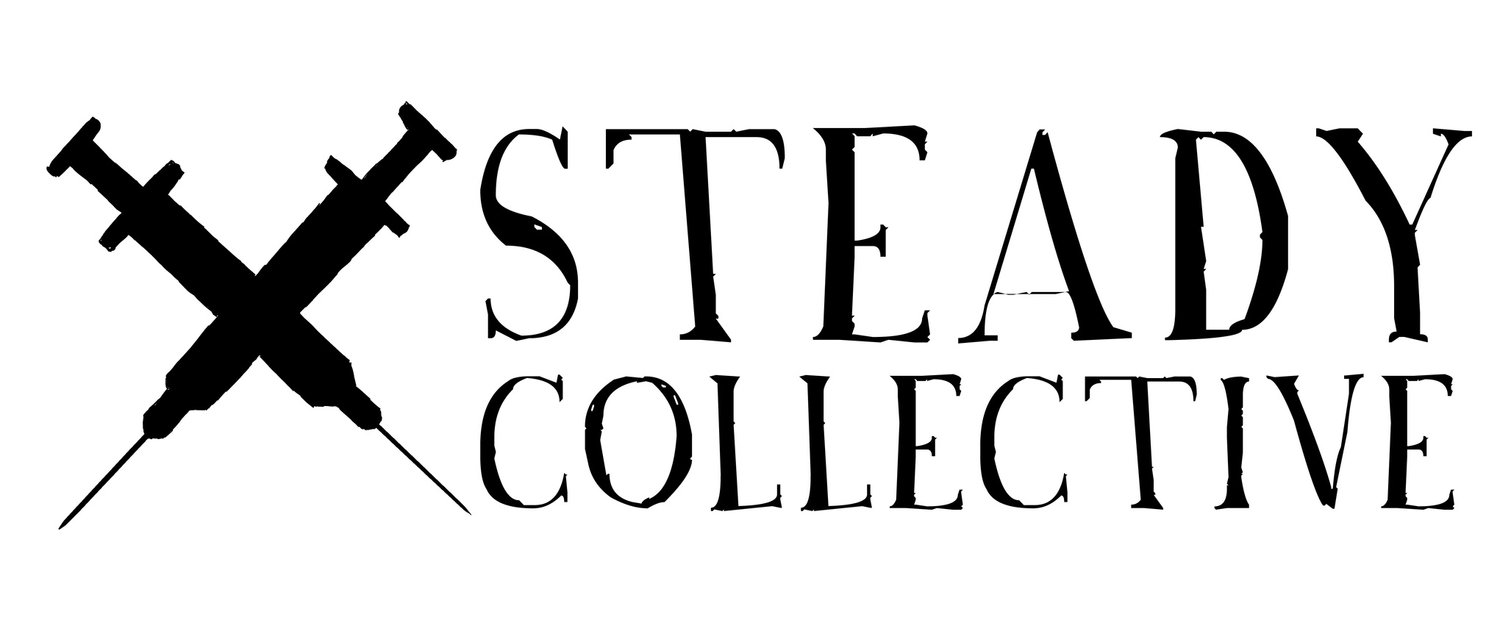Frequently Asked Questions.
What should I do if I find a used syringe?
If you are uncomfortable picking up used syringes, you can call The Steady Collective and we will send a staff member to pick up any amount of needle litter. If you are comfortable, follow these steps:
Put on gloves.
Place a puncture-proof container (empty laundry detergent or bleach bottle, a biohazard sharps container) on the ground beside the syringe.
Using tongs or gloved hands (whichever provides the most control), pick up the syringe by the middle of the barrel.
Place the syringe into the container, sharp end first.
Secure the lid of the container.
Remove gloves and wash your hands.
You can bring your containers to The Steady Collective during outreach hours or take them to the Buncombe County Transfer Station (190 Hominy Creek Road).
Steady Collective has regular syringe pick-up events. Studies show needle litter to be less prevalent near community syringe access programs.
Do Syringe Exchange Programs (SSPs) increase needle litter?
Studies have shown SSPs reduce needle litter in their immediate vicinity. What’s more, it has also been demonstrated that SSPs reduce rates of HIV and HCV (Hepatitis C) in communities of people who use drugs by 50%, leading to less risk of communicable disease transmission in the event of an accidental needle stick.
Why does Asheville need an SSP?
According to the NC Department of Health and Human Services, Buncombe county has one of the highest unintentional overdose death rates in the state (While the 2019 statewide rate per 100,000 residents was 17.2, Buncombe county's rate was 32.5). In the last decade, the highest rate of meth-related deaths in the state occurred in Buncombe county. Hospitalizations and surgeries to treat infective endocarditis, an infection of one or more heart valves often caused by injecting with used needles, have increased tenfold in North Carolina.
What does Steady do if a participant is seeking treatment?
Steady maintains a list of evidence-based treatment resources which can also be found on the Resources page of our website. If participants ask, we provide referrals to trusted providers from that list. If you are interested in being included as a resource for our participants, contact us.
